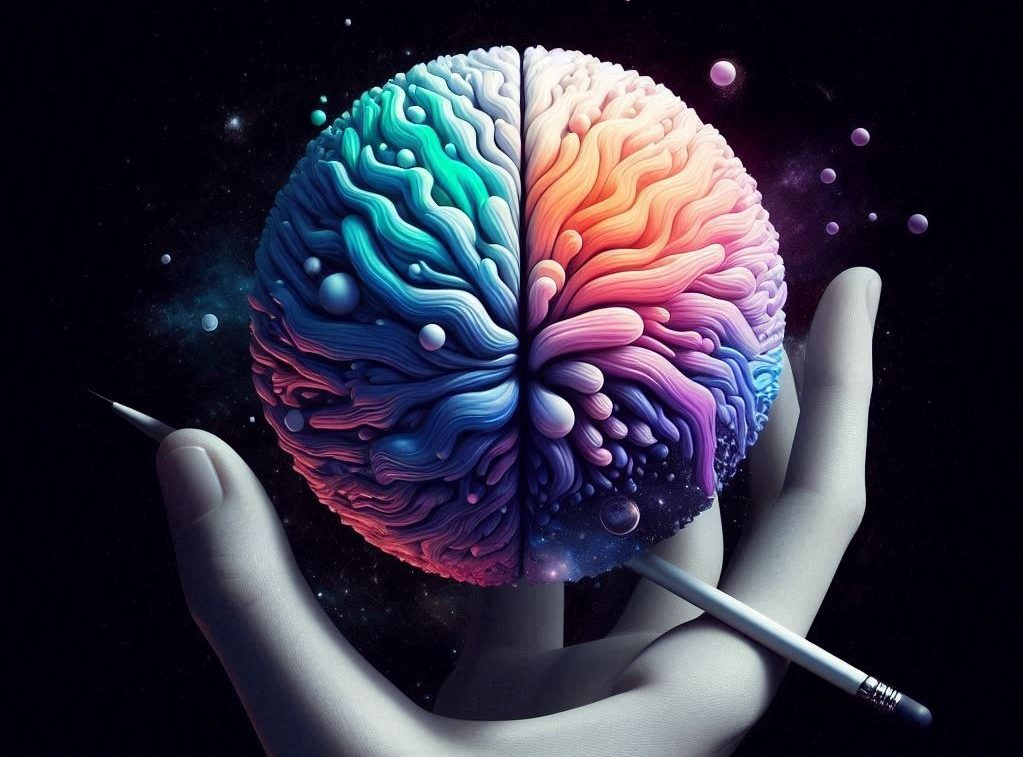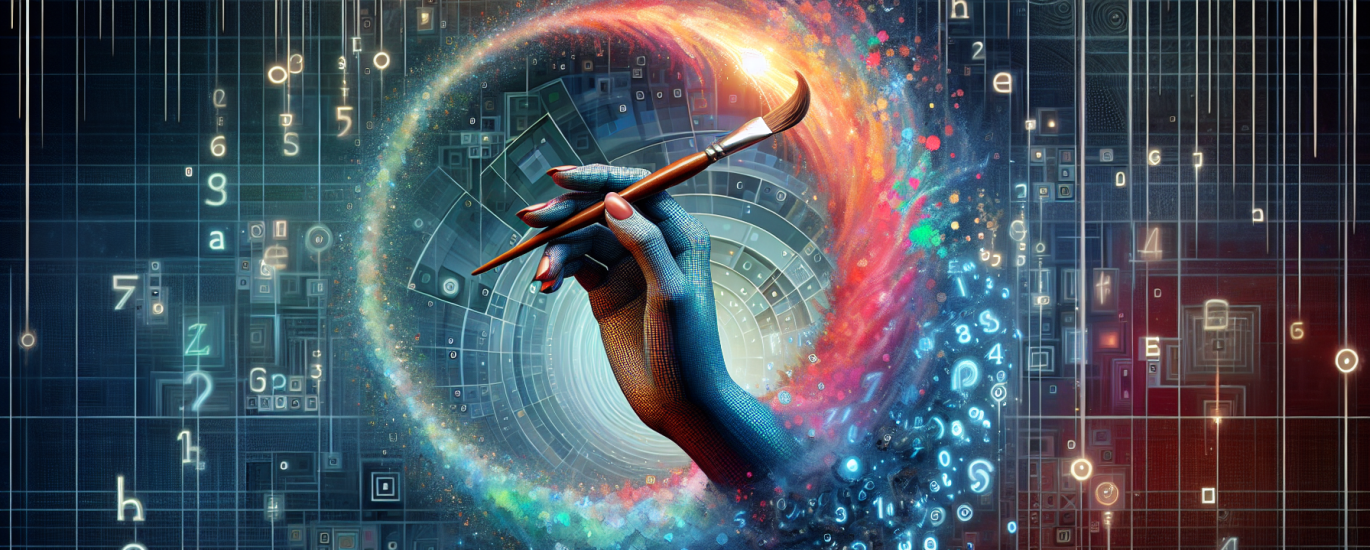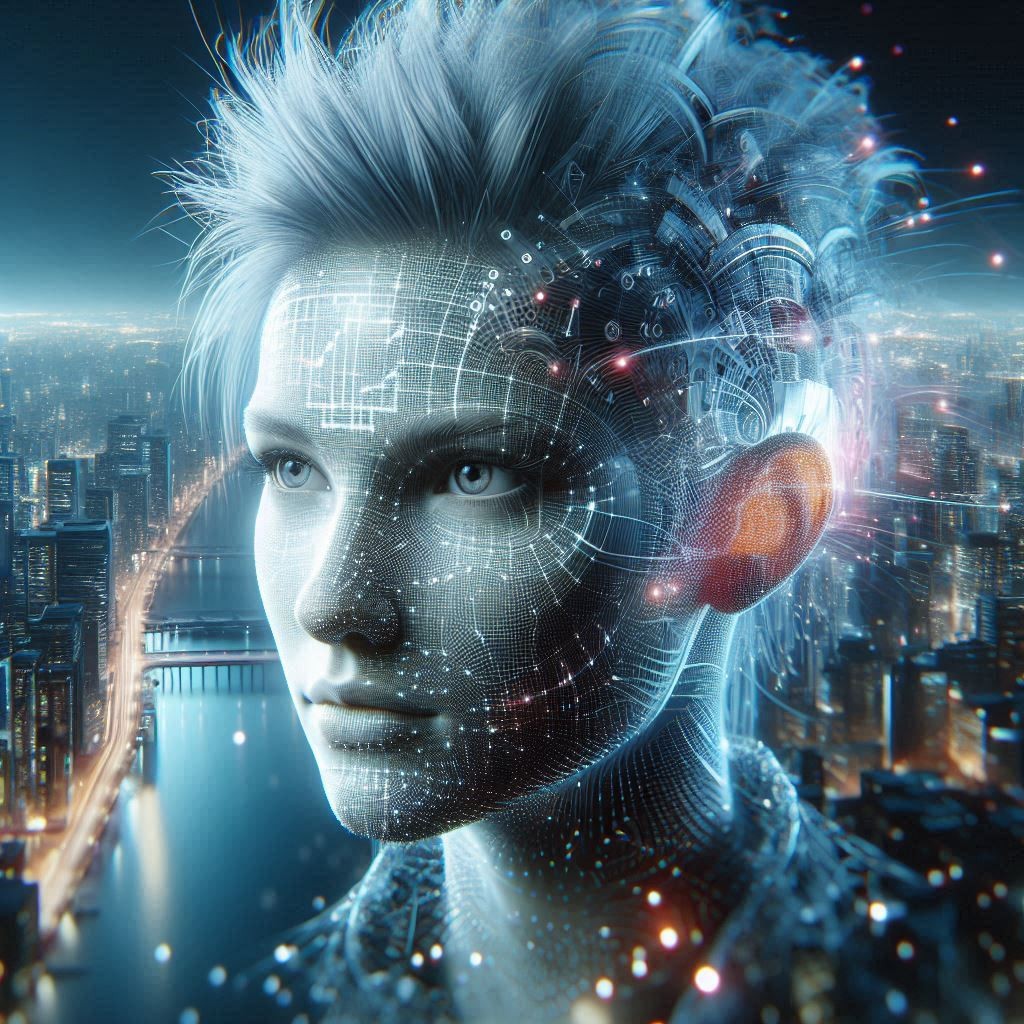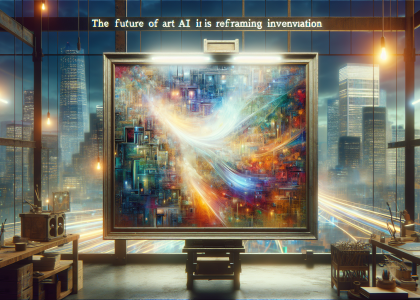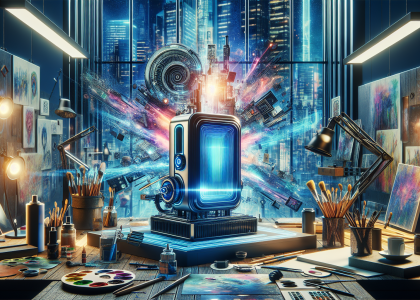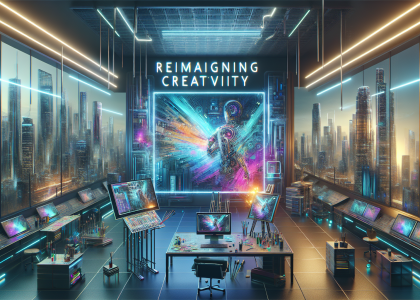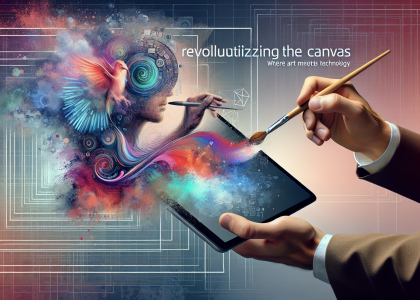The AI Revolution in Artistic Expression
In the ever-evolving landscape of creativity, a new muse has emerged, one born not of flesh and blood, but of circuits and code. Artificial Intelligence, once the stuff of science fiction, has burst onto the artistic scene with a flourish, challenging our perceptions of creativity and pushing the boundaries of what we consider art. From the canvas to the concert hall, AI is leaving its digital fingerprints on every facet of artistic expression, sparking a revolution that’s as exhilarating as it is controversial.
Painting with Pixels: AI in Visual Arts
Picture this: a gallery filled with stunning portraits, each one unique, each one captivating. Now, imagine discovering that these masterpieces were created not by a human hand, but by an AI algorithm. This scenario is no longer confined to the realm of imagination; it’s our new reality.
AI-powered tools like DALL-E, Midjourney, and Stable Diffusion have burst onto the scene, transforming text prompts into vivid, sometimes surreal visual artworks. These systems, trained on vast datasets of human-created art, can generate images that range from photorealistic portraits to abstract compositions that defy categorization.
But AI’s role in visual arts isn’t limited to generation. It’s also revolutionizing restoration and analysis. Algorithms can now enhance old, damaged photographs, bringing history to life with unprecedented clarity. AI can even help authenticate artworks, detecting forgeries with a level of precision that surpasses human experts.
The implications are staggering. As AI continues to evolve, we’re witnessing the birth of entirely new artistic styles and techniques. The line between human and machine creativity is blurring, challenging our notions of authorship and originality.
Composing in Code: AI’s Musical Masterpieces
From the visual, let’s transition to the auditory. The world of music, too, is experiencing a seismic shift thanks to AI. Algorithms are now composing symphonies, crafting catchy pop tunes, and even mimicking the styles of legendary musicians.
Take AIVA (Artificial Intelligence Virtual Artist), for instance. This AI composer has created music for film trailers, video games, and even a full-length album. Its compositions have fooled listeners in blind tests, with many unable to distinguish between AI-generated and human-composed pieces.
But AI’s role in music goes beyond composition. It’s revolutionizing music production, offering tools that can master tracks, generate backing instrumentals, and even create personalized playlists based on listeners’ moods and preferences.
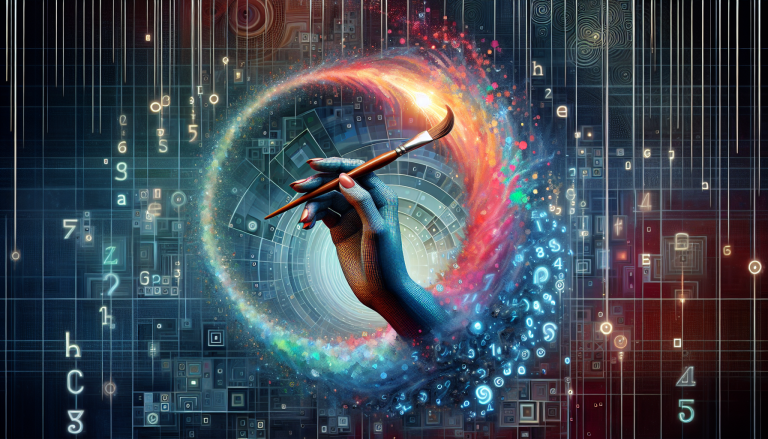
The potential here is mind-boggling. Imagine an AI that can analyze your brain waves and compose a piece of music tailored specifically to your emotional state. Or consider the possibilities for music education, with AI tutors that can provide personalized instruction and feedback in real-time.
Prose and Programs: AI in Literature
Now, let’s turn the page to the world of literature, where AI is penning its own chapter in the annals of creativity. Natural Language Processing (NLP) models like GPT-3 are pushing the boundaries of what’s possible in written expression.
These AI systems can generate everything from short stories and poetry to full-length novels. They can mimic the styles of famous authors, craft compelling narratives, and even engage in creative wordplay that rivals human writers.
But AI’s impact on literature extends beyond creation. It’s revolutionizing the way we analyze and interact with text. AI-powered tools can summarize long documents, translate between languages with increasing accuracy, and even provide real-time writing assistance, suggesting improvements in grammar, style, and clarity.
The implications for the publishing industry are profound. AI could potentially streamline the editorial process, help identify promising manuscripts, and even tailor stories to individual readers’ preferences.
The Collaborative Canvas: Human-AI Partnerships
As we navigate this brave new world of AI-assisted creativity, it’s crucial to recognize that the most exciting possibilities lie not in AI replacing human artists, but in the potential for collaboration between human and machine.
In the visual arts, tools like Adobe’s Sensei AI are augmenting human creativity, offering intelligent assistance in tasks like image editing and design. Musicians are using AI to generate novel sounds and compositions, which they then refine and incorporate into their work. Writers are leveraging AI as a brainstorming tool, using it to overcome writer’s block and explore new narrative directions.
This symbiosis between human and artificial intelligence is giving rise to entirely new forms of artistic expression. It’s a partnership that combines the raw computational power and pattern recognition capabilities of AI with the nuanced understanding, emotional depth, and creative intuition of human artists.
Ethical Brushstrokes: Navigating the AI Art Debate
As with any transformative technology, the integration of AI into the arts raises important ethical questions. Issues of copyright and authorship become murky when an AI system trained on human-created works generates new art. Questions of authenticity and value arise when considering AI-created pieces alongside human-made art.
Moreover, there are concerns about the potential homogenization of art. If AI systems are trained on existing works, could they inadvertently perpetuate existing biases or stifle true innovation?
These are complex issues that the artistic community, legal experts, and society at large will need to grapple with as AI continues to evolve and integrate into creative processes.
The Canvas of Tomorrow: The Future of AI in Art
As we look to the horizon, the potential for AI in the arts seems limitless. We may see AI systems that can generate entire virtual worlds, complete with their own unique cultures and artistic traditions. Or imagine AI-powered augmented reality experiences that turn our everyday environments into interactive art installations.
The evolution of AI in the arts is not just changing how we create; it’s reshaping how we perceive and interact with art. It’s democratizing creativity, providing tools that allow anyone to express themselves artistically. At the same time, it’s pushing the boundaries of what we consider possible in artistic expression.
In this brave new world of AI-assisted creativity, the role of the human artist is evolving. Rather than being replaced, human creativity is being augmented and expanded. The artist of the future may be as much a curator and director of AI-generated content as a creator in the traditional sense.
As we stand on the cusp of this artistic revolution, one thing is clear: the canvas of tomorrow will be painted with brushstrokes of both human inspiration and artificial intelligence. It’s a future that promises to be as challenging as it is exciting, as controversial as it is groundbreaking. But one thing is certain – it will be a masterpiece unlike anything we’ve seen before.

